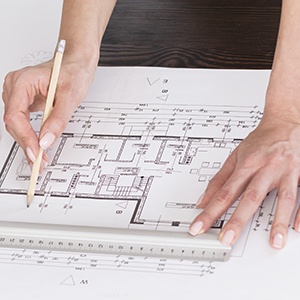 A critical – and yet often overlooked – aspect of successful office design is space planning, which is about far more than just deploying equipment, furniture and people. That’s because the operative word in space planning isn’t SPACE; it’s PLANNING. As such, businesses need to work with their interior solutions team to answer key questions well in advance of their office design project. These questions include:
A critical – and yet often overlooked – aspect of successful office design is space planning, which is about far more than just deploying equipment, furniture and people. That’s because the operative word in space planning isn’t SPACE; it’s PLANNING. As such, businesses need to work with their interior solutions team to answer key questions well in advance of their office design project. These questions include:
1. What kind of space do we need?
In the context of office design, space is a functional asset. On in other words, how effectively (or ineffectively as the case may be) space is used determines whether it will align with a business’s needs and requirements or, alternatively, if it will impede them.
For example, businesses that have a significant amount of customer traffic – such as a car dealership or dental practice – will need to plan their space accordingly to ensure that both customers and employees have their needs met. On the other end of the spectrum, businesses that have relatively little customer traffic would typically not want to allocate much space to a reception or waiting area, since it could be better used for other purposes (e.g. employee workspaces, storing inventory, etc.).
2. What are our future plans?
While meeting current needs is a priority, office design should also be planned and configured to suit future plans, such as onboarding new staff, supporting a remote workforce, adding inventory/reducing inventory levels, and so on.
With this being said, updating the office design on a regular basis is both normal and advised. In this sense, office design is really a long-term program than a short-term project, simply because the needs of each business will change over time.
3. What impact will office design have on our current furniture inventory?
It is possible that your current office furniture inventory may not support some of your office design aspirations. While this is certainly not an obstacle – the office furniture marketplace is massive – it is nevertheless a factor that businesses should take into consideration.
For example, an layout requiring the purchase of dozens of cubicles would obviously add to the overall cost thousands (or perhaps tens of thousands) of dollars. Alternatively, a design that exploits a more open plan approach would probably not require any cubicles – thus avoiding the additional investment.
4. What office design best serves our workforce?
Does an open office environment make sense, or one that is more conventional? Will teams be co-located in the same environment, or will they be separated in functional units? Do we need to support one-way traffic flows? These are questions that all need to be answered and integrated into the office design plan, so that it supports employee efficiency and engagement.
5. What are our energy goals and needs?
Office design has a major impact on energy usage — and hence, environmental friendliness (or lack thereof) and monthly utility bills. Businesses should explore various options and approaches that help them reduce their ecological footprint while lowering their overall maintenance costs.
Learn More
To learn more about why space planning is an essential part of office design, and what questions your unique business should be asking now vs. later, contact Key Interiors today. Your consultation with us is free.
For more information on office design and if the open and collaborative approach is right for you, download our FREE eBook:
{{cta(‘6e7c4d88-eb76-4ed9-a6e1-b7c61d98ca99’)}}